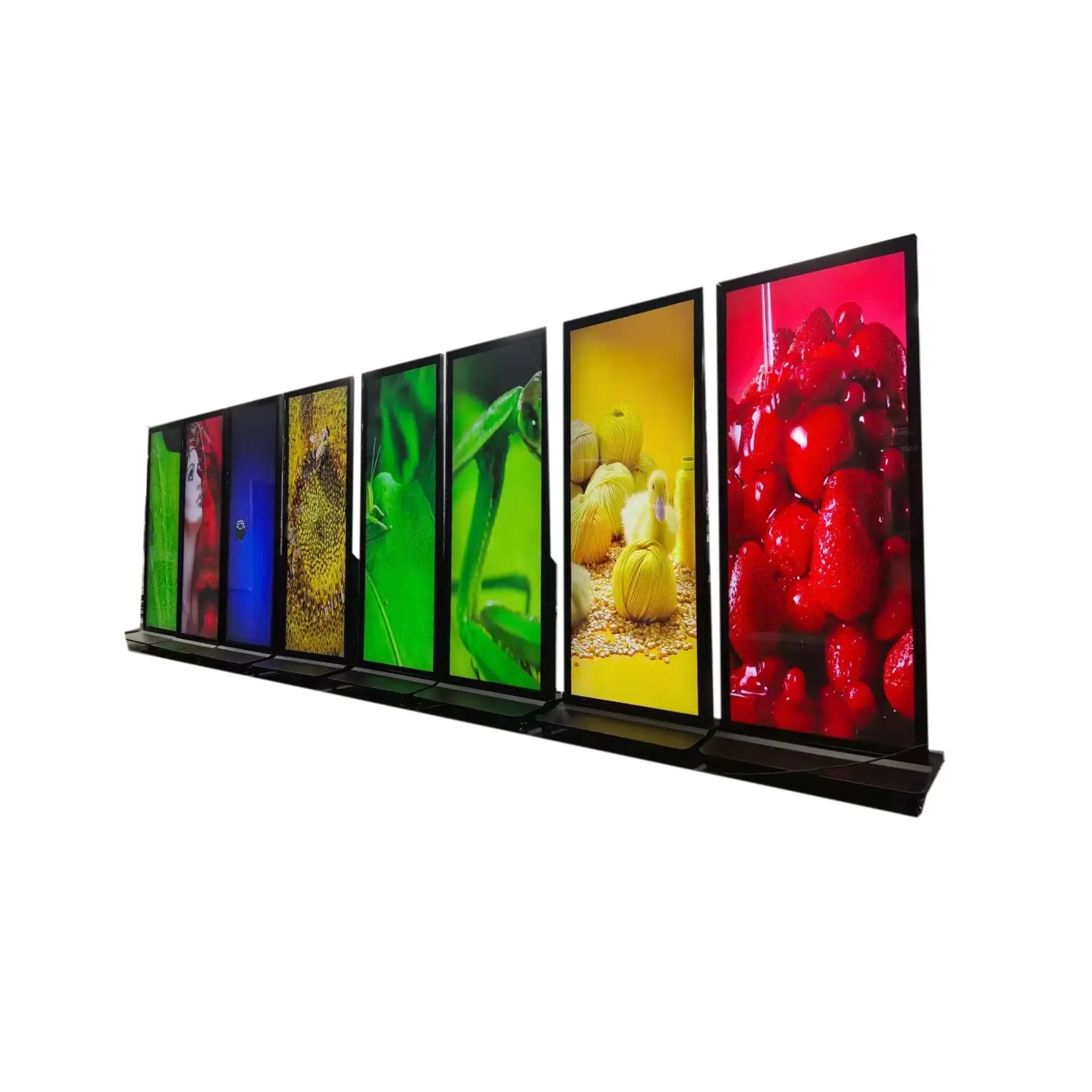Transforming Modern Communication Through Dynamic Displays
Digital signage has revolutionized how businesses and organizations communicate with their audiences. From vibrant retail displays to interactive information boards in corporate settings, these dynamic visual solutions are reshaping the way we consume information and experience spaces. As technology continues to advance, digital signage systems have evolved from simple electronic billboards to sophisticated communication platforms that engage, inform, and inspire.
The impact of digital signage extends far beyond mere visual appeal. It creates immersive experiences that capture attention, drive engagement, and deliver measurable results. In today's fast-paced world, where traditional static displays struggle to maintain relevance, digital signage offers the flexibility and dynamism needed to stay ahead in the competition for audience attention.
Core Components of Effective Digital Signage Systems
Hardware Infrastructure and Display Technology
The foundation of any digital signage solution lies in its hardware components. High-quality displays, media players, and mounting systems work together to create a reliable and visually impressive installation. Modern LED and LCD screens offer exceptional brightness, contrast, and color accuracy, ensuring content remains visible and engaging even in challenging lighting conditions.
The selection of appropriate display technology depends on various factors, including viewing distance, ambient light conditions, and installation environment. Indoor displays might prioritize color accuracy and viewing angles, while outdoor installations require weather resistance and high brightness capabilities to combat sunlight.
Content Management Systems and Software Solutions
Behind every successful digital signage network lies a robust content management system (CMS). These platforms enable users to create, schedule, and deploy content across multiple displays from a centralized location. Advanced CMS solutions offer features like real-time updates, dynamic content integration, and automated scheduling to ensure displays remain fresh and relevant.
Integration capabilities with external data sources, social media feeds, and analytics platforms extend the functionality of digital signage systems. This allows for dynamic content adaptation based on factors such as time of day, weather conditions, or audience demographics.

Strategic Implementation Across Industries
Retail and Hospitality Applications
In retail environments, digital signage serves as a powerful tool for enhancing the shopping experience. Dynamic product displays, promotional content, and wayfinding solutions help guide customers through their journey while driving sales and brand awareness. Interactive touchscreen displays enable customers to explore product information, check availability, and even make purchases directly.
Hotels and restaurants utilize digital signage to streamline operations and improve guest experiences. From digital menu boards to interactive hotel directories, these solutions reduce perceived wait times and provide valuable information to visitors while maintaining brand consistency.
Corporate Communication and Education
Organizations leverage digital signage to improve internal communication and enhance workplace environments. Real-time updates, company news, and performance metrics displayed on strategic locations keep employees informed and engaged. In educational settings, digital signage facilitates information sharing, emergency notifications, and campus-wide communications.
Interactive displays in meeting rooms and common areas support collaborative work environments, while digital wayfinding systems help navigate complex corporate or campus layouts. The flexibility of digital signage allows for quick content updates and targeted messaging across different departments or locations.
Maximizing ROI Through Strategic Content Design
Creating Engaging Visual Experiences
Successful digital signage implementation relies heavily on compelling content that captures attention and delivers value. High-quality graphics, animation, and video content work together to create memorable experiences that resonate with viewers. The key lies in striking the right balance between information and entertainment while maintaining brand consistency.
Professional design principles, such as contrast, hierarchy, and motion, play crucial roles in ensuring content effectiveness. Understanding viewer behavior and environmental context helps optimize content layout and timing for maximum impact.
Data-Driven Content Optimization
Analytics and measurement tools provide valuable insights into content performance and viewer engagement. By tracking metrics such as viewing times, interaction rates, and conversion data, organizations can refine their content strategy for better results. A/B testing different content formats and messaging approaches helps identify the most effective combinations for specific locations and audiences.
Integration with customer relationship management (CRM) systems and point-of-sale data enables personalized content delivery and more targeted messaging strategies. This data-driven approach ensures digital signage investments deliver measurable returns.
Future Trends and Technological Innovations
Artificial Intelligence and Machine Learning Integration
The integration of AI and machine learning technologies is transforming digital signage capabilities. Smart content optimization algorithms can automatically adjust displays based on real-time audience analytics, weather conditions, and other environmental factors. Facial recognition and demographic analysis enable more personalized content delivery while respecting privacy considerations.
Predictive analytics help forecast viewer behavior and optimize content scheduling for maximum impact. AI-powered content creation tools are making it easier for organizations to maintain fresh, relevant content across their digital signage networks.
Interactive and Immersive Technologies
The rise of touchless interaction technologies and augmented reality is opening new possibilities for digital signage applications. Gesture control, voice commands, and mobile device integration create more engaging and hygienic interaction options. These technologies enable more immersive experiences while maintaining safe distancing requirements.
The integration of IoT sensors and environmental monitoring systems allows digital signage to respond dynamically to changing conditions and viewer needs. This creates more contextually relevant and engaging experiences that drive better results.
Frequently Asked Questions
What are the key benefits of implementing digital signage?
Digital signage offers numerous advantages including improved engagement, real-time content updates, reduced printing costs, and enhanced brand visibility. It also provides flexibility in content management, better targeting capabilities, and measurable results through analytics.
How do I choose the right display technology for my needs?
The selection depends on factors such as installation environment, viewing distance, ambient light conditions, and budget. Consider LED for outdoor or large-format displays, LCD for indoor applications, and interactive displays for engagement-focused installations.
What ongoing maintenance does digital signage require?
Regular maintenance includes software updates, content refreshes, hardware inspections, and cleaning. It's important to have a maintenance plan that covers both technical aspects and content management to ensure optimal performance and longevity of the system.

